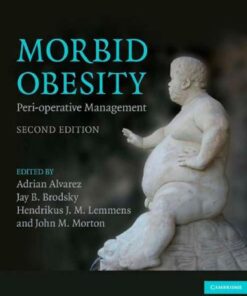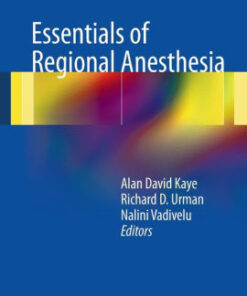(PDF) Total Burn Care 5th Edition by David N. Herndon
$32.00
Download instantly Total Burn Care 5th Edition by David N. Herndon. It is ebook in PDF format.
ISBN-10: 0323476619 ISBN-13: 9780323476614
Preview
This is the PDF eBook version for Total Burn Care 5th Edition by David N. Herndon
Table of Contents
1. History of Treatments of Burns
2. Teamwork for Total Burn Care: Achievements, Directions and Hopes
3. Epidemiological, Demographic and Outcome Characteristics of Burn Injury
4. Prevention of Burn Injuries
Immediate Care
5. Burn Management in Disasters and Humanitarian Crises
6. Care of Outpatient Burns
7. Pre-Hospital Management, Transportation and Emergency Care
8. Pathophysiology of Burn Shock and Burn Edema
9. Fluid Resuscitation and Early Management
The Burn Wound
10. Evaluation of the Burn Wound: Management Decisions
11. Wound Care
12. Treatment of Infection in Burns
13. Operative Wound Management
14. Anesthesia for Burned Patients
15. The Skin Bank
16. Alternative Wound Coverings
17. AlloDerm
Inhalation Injury
18. The Pathophysiology of Inhalation Injury
19. Diagnosis and Treatment of Inhalation Injury
20. Barotrauma and Inhalation Injury
21. Respiratory Care
Response to Injury
22. The Systemic Inflammatory Response Syndrome
23. The Immunological Response and Strategies for Intervention
24. Hematologic, Hematopoietic, and Acute Phase Responses
25. Significance of the Adrenal and Sympathetic Response to Burn Injury
26. Hepatic Response to Burn Injury
27. Effects of Burn Injury on Bone and Mineral Metabolism
28. Vitamin and Trace Element Homeostasis Following Severe Burn Injury
29. Hypophosphatemia
30. Nutritional Support of the Burned Patient
31. Modulation of the Hypermetabolic Response after Burn Injury
32. Etiology and Prevention of Multisystem Organ Failure
33. Renal Failure in Burn Patients
34. Critical Care in the Severely Burned: Organ Support and Management of Complications
35. Burn Nursing
36. Special Considerations of Age: The Pediatric Burned Patient
37. Care of Geriatric Patients
38. Surgical Management of Complications of Burn Injury
Nonthermal Injuries
39. Electrical Injuries
40. Electrical Injury: Reconstructive Problems
41. Cold-Induced Injury: Frostbite
42. Chemical Burns
43. Radiation Injuries, Vesicant Burns and Mass Casualties
44. Exfoliative and Necrotizing Diseases of the Integument
Pathophysiology
45. The Burn Problem: A Pathologist’s Perspective
46. Wound Healing
47. Molecular and Cellular Basis of Hypertrophic Scarring
48. Pathophysiology of the Burn Scar
Rehabilitation
49. Comprehensive Rehabilitation of the Burn Patient
50. Musculoskeletal Changes Secondary to Thermal Burns
51. Mitigation of the Burn-Induced Hypermetabolic Response during Convalescence
Reconstruction
52. Overview of Burn Reconstruction
53. Reconstruction of the Burned Hand
54. Reconstruction of the Head and Neck
55. Reconstruction of the Burned Scalp Using Tissue Expansion
56. Management of Contractual Deformities Involving the Shoulder, Elbow, Hip and Knee Joints in Burn Patients
57. Reconstruction of the Burned Breast
58. Management of Burn Injuries of the Perineum
59. Foot Burns and Their Complications
Social Issues
60. The Ethical Dimensions of Burn Care
61. Maltreatment by Burning
62. Functional Sequelae and Disability Assessment
63. Cost Containment and Outcome Measures in the Burn Center
Psychological Issues
64. Management of Pain and Other Discomforts in Burned Patients
65. Psychiatric Disorders Associated with Burn Injury
66. Psychosocial Recovery and Reintegration of Patients with Burn Injuries




